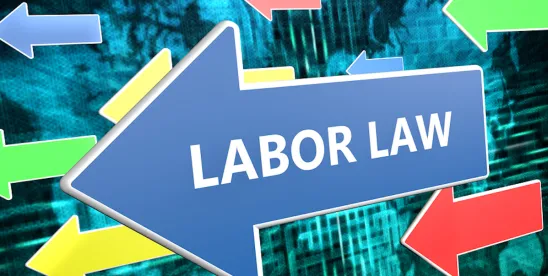The Supreme Court’s June 28 decision to overrule the 40-year-old case of Chevron U.S.A. v. Natural Resources Defense Council should not be cause for alarm.
It is, however, likely to have implications for employers that are subject to the myriad of workplace laws administered by the United States Department of Labor, the National Labor Relations Board and other executive branch bodies.
Why the Buzz About Chevron?
For decades, courts have relied on the so-called Chevron doctrine—a mandate by which judges were required to defer to agency expertise when handling controversies surrounding Executive Branch policy, but that rule ended with Loper Bright Enterprises et al., v. Raimondo. While the categorical rejection of Chevron—as inconsistent with the responsibility of courts defined in the APA—went farther than most analysts expected, it should be noted, as Justice Neil Gorsuch’s concurrence makes clear, that the Supreme Court hasn’t decided a case on the basis of Chevron since 2016.
The Loper Bright decision will certainly encourage those challenging agency action. Most susceptible will be agencies like the Department of Labor (DOL), the Equal Employment Opportunity Commission (EEOC), and the National Labor Relations Board (NLRB). As a reminder, the DOL regulates broadly over many complex workplace matters under a number of distinct statutes, including the Fair Labor Standards Act, the Occupational Safety and Health Act, and numerous other statutes. The EEOC enforces many significant civil rights laws governing employment, such as Title VII of the Civil Rights Act of 1964 and the Americans with Disabilities Act (among others), and the NLRB administers the National Labor Relations Act in connection with employee rights to bargain collectively and to engage in other forms of protected concerted activity with respect to their terms and conditions of employment.
From Chevron to Loper Bright
Under the Supreme Court’s 1984 Chevron decision, courts were to defer to agency interpretations of the statutes within their authority and expertise. (See our refresher at the time of oral argument in January.) Now, the Supreme Court, in a 43-page majority decision written by Chief Justice John Roberts with five justices joining, says that the Administrative Procedure Act (APA) requires courts to exercise their independent judgment in deciding whether an agency has acted within its statutory authority—and courts may not defer to an agency interpretation of the law simply because a statute is ambiguous.
The Supreme Court noted that “during the rapid expansion of the administrative process that took place during the New Deal era” of the early 20th century, the Court often treated agency determinations of fact as binding on the courts but did not extend similar deference to agency resolutions of legal questions. The APA was enacted in 1946 as a check upon agency action, prescribing procedures for such action and delineating the contours of judicial review. The Court noted that the APA specifies that courts, not agencies, will decide relevant questions of law arising on review of agency action, even those involving ambiguous laws—and prescribes no deferential standard. Chevron deference, the Court concluded, cannot be reconciled with the APA.
What is Changing and What Isn’t
While Executive Branch departments and administrative agencies no longer will be afforded deference based only on their interpretation of ambiguous statutory language, they are still likely to get some (as yet to be determined) degree of respect from courts that are analyzing findings of fact or policy in the challenged regulatory activities—as the courts consider under the APA whether those actions are arbitrary or capricious.
When one considers the power of administrative courts and their influence on agency interpretations of agency jurisdiction, it is clear that the conservative majority of the Supreme Court is taking a hard line on separation of powers and narrowing the exercise of power by the Executive Branch, AKA the administrative state.
Notably, the Court’s decision in and of itself will not overturn or impact cases previously upheld under Chevron. Courts will continue to interpret statutes to effectuate the will of Congress and to see if agencies have authority for their regulations. Of most immediate significance, there will still be a level of security with respect to regulations currently in place.
Takeaways for Stakeholders
In the wake of this decision, business leaders and other stakeholders will be wondering how might changes in Chevron impact their interests. Which investments are safe? Which are subject to a change in regulatory landscape? While the Court’s decision could alter litigation strategy for stakeholders challenging regulations and will likely occasion remands and reconsiderations in pending Chevron-based appeals and motions, Loper Bright does not mean that administrative agency policies and interpretations will themselves change, and those agency positions remain ones that courts must consider, albeit under a new standard.
It is clearly foreseeable that the Court’s holding in Loper Bright will provide employers and their representatives with the opportunity to challenge DOL, EEOC, and NLRB interpretations of the laws they administer when those interpretations go beyond the language of the statutes themselves, and additional opportunity to push back against agency interpretations that shift with changes in the White House and Congress.





 />i
/>i

